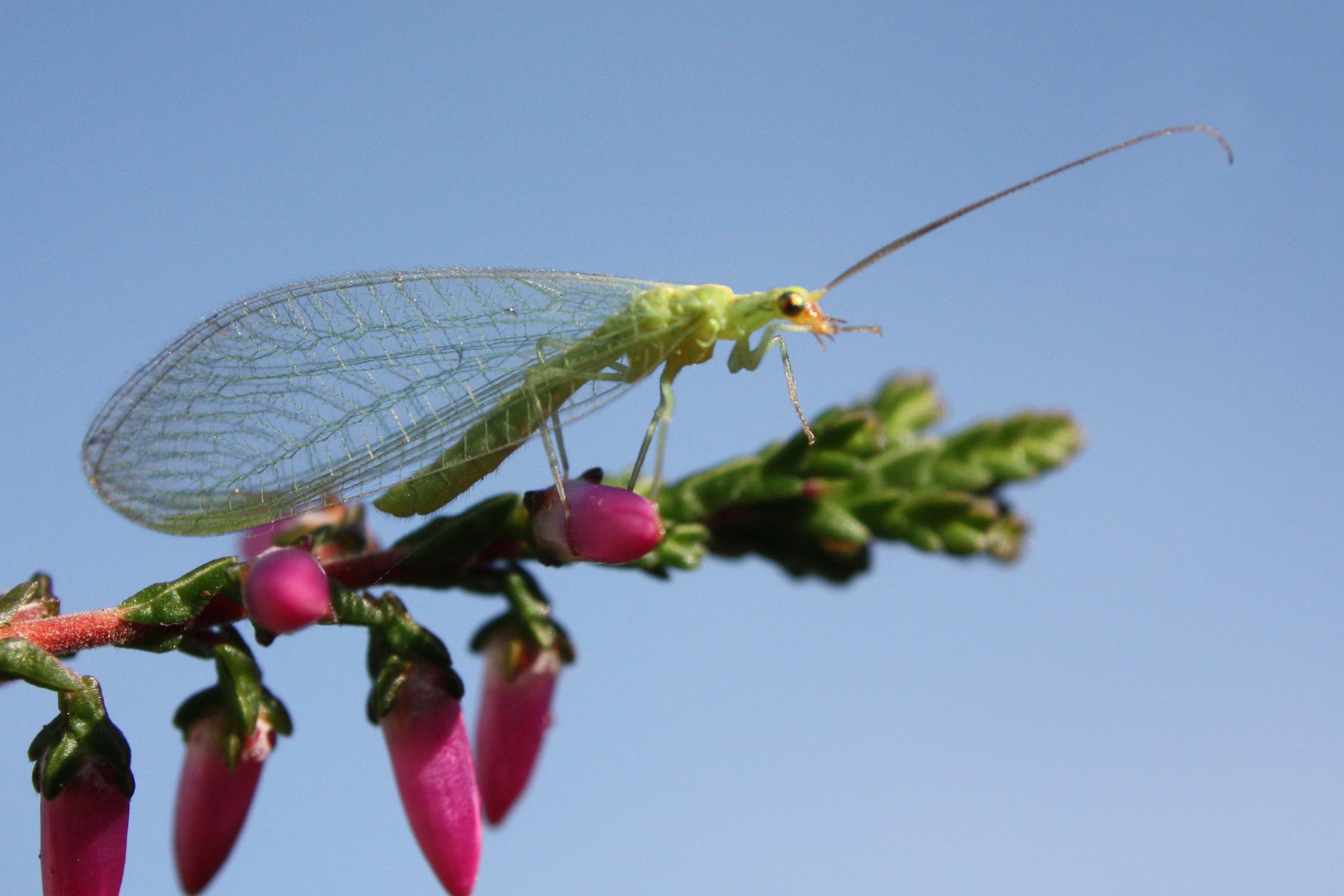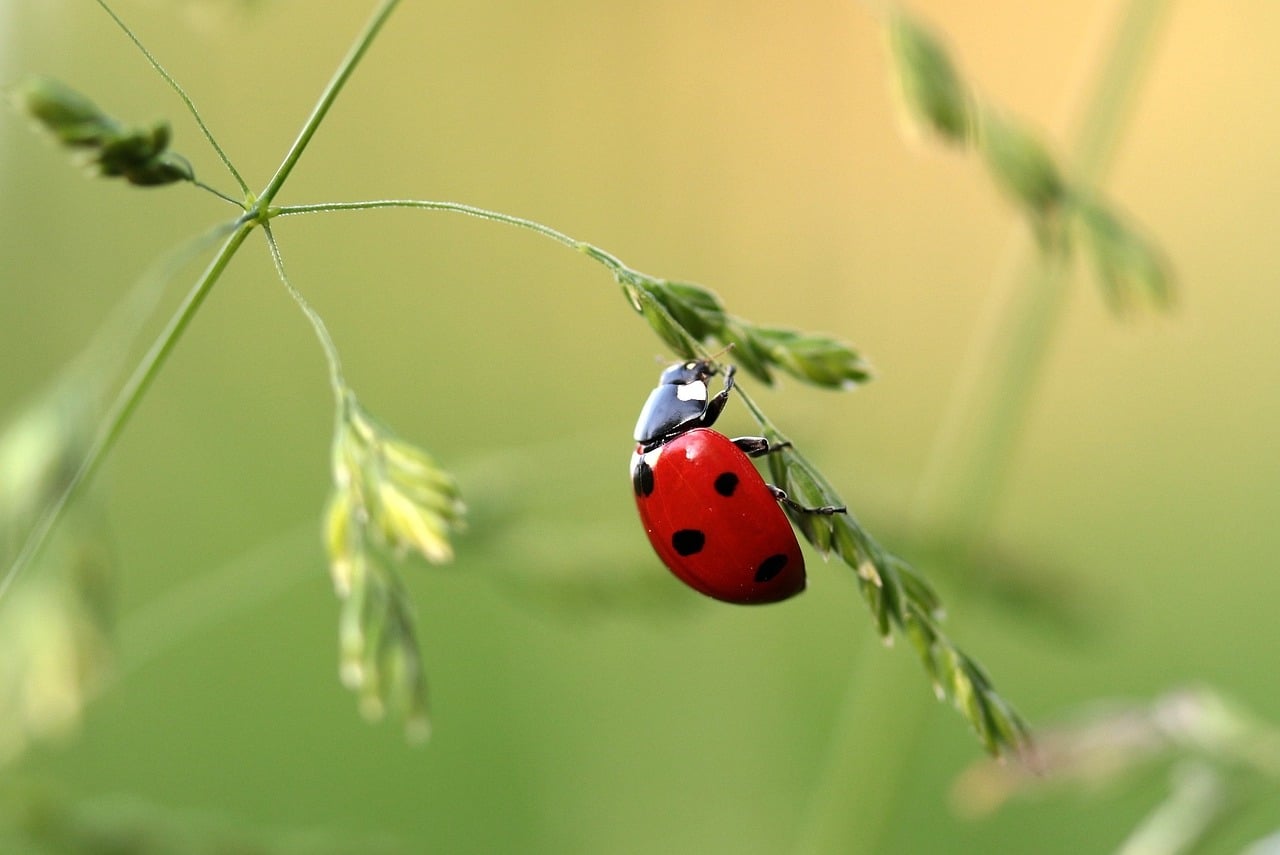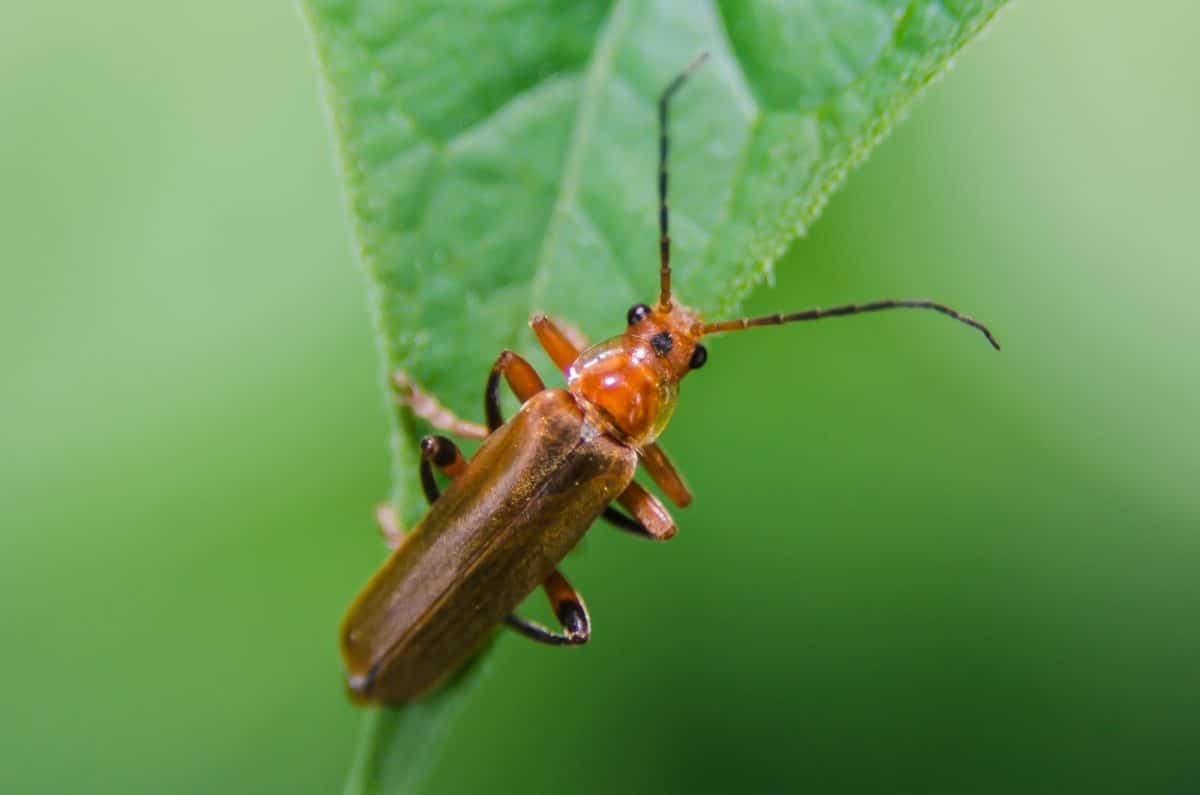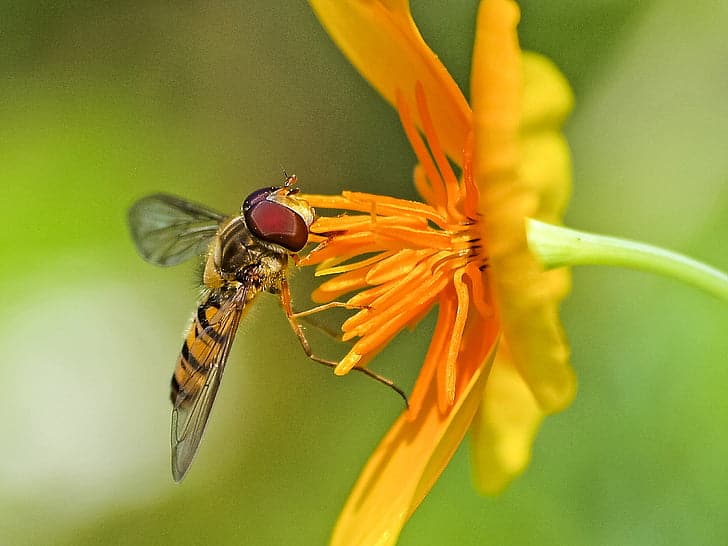Beneficial insects aka natural enemies or good bugs are predators that help control pests. Some common ones you’re likely to see in the spring garden include:
 Green lacewings – recognizable with their slender pale green body, delicate gossamer wings and immense golden eyes. The adult consumes only pollen and nectar; it’s the young form that is the hunter.
Green lacewings – recognizable with their slender pale green body, delicate gossamer wings and immense golden eyes. The adult consumes only pollen and nectar; it’s the young form that is the hunter.
 Lady beetle – rotund little reddish-orange beetle with a variety of spotting patterns. The rather alligator-looking larvae stage is the most aggressive with an enormous appetite.
Lady beetle – rotund little reddish-orange beetle with a variety of spotting patterns. The rather alligator-looking larvae stage is the most aggressive with an enormous appetite.
 Soldier beetles – adults are relatively soft bodied, straight-sided beetles about one-half inch long with a red, orange, or yellow head and abdomen.
Soldier beetles – adults are relatively soft bodied, straight-sided beetles about one-half inch long with a red, orange, or yellow head and abdomen.
 Syrphid flies – aka hover flies, resemble bees, black or brown adorned with yellow banded abdomens and body markings. Again, it’s the larvae that are the predators. The adults feast on pollen and nectar and their movement from flower to flower makes them an important pollinator.
Syrphid flies – aka hover flies, resemble bees, black or brown adorned with yellow banded abdomens and body markings. Again, it’s the larvae that are the predators. The adults feast on pollen and nectar and their movement from flower to flower makes them an important pollinator.
To attract and keep these garden good guys around they need food, water, and shelter, all generally available in the garden.
- Grow a variety of plants types that flower at different times to provide them with nectar, pollen, and shelter throughout the growing season.
- Include members of the carrot family (dill, fennel, and parsley), the daisy family (coneflowers, daisies, and yarrow), and herbs like rosemary and thyme.
- Tolerate low populations of plant-feeding insects and mites so they that food is available for the good bugs.
- Reduce dust – it can interfere with the good guys and result in outbreaks of pests such as spider mites.
- Go light on fertilization – lots of lush new growth on plants encourages sucking pests like aphids to reproduce more rapidly than natural enemies can control.